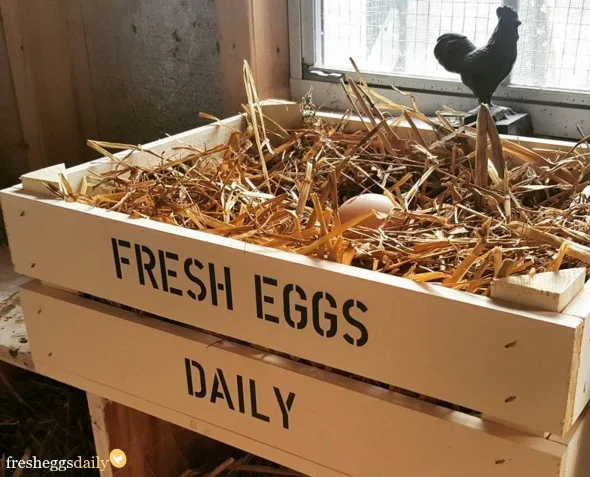All about Chicken Coop Nesting Boxes
Nesting boxes are where your chickens lay their eggs - or at least where they should lay their eggs!
By providing enough boxes that are the right size, in the right location in your coop, filled with soft nesting material, you can encourage your chickens to use the boxes so your eggs will be clean and unbroken when you go to collect them.
All about Chicken Coop Nesting Boxes
How Many Nesting Boxes Do I Need?
Rule of thumb is that you should have one nesting box for every 3-4 hens, but realistically, all of your chickens will want to use just one or two boxes - even if all the boxes are nearly identical.
I call this Nesting Box Wars. If you are fortunate, your chickens will act like ladies and patiently wait their turn to lay in the coveted box.
How Big Do the Nesting Boxes Need to Be?
Your nesting boxes should be at least 12" square - and closer to 14" square if you have larger breeds such as buffs, australorps or Sussex.
If your boxes are too large, hens will be more likely to try to squeeze into a box while another hen is laying, which can lead to broken eggs - not a good thing.
What Should I Make the Nesting Boxes Out Of?
You can build rows of nesting boxes out of wood, you can sometimes find vintage metal boxes.
Some people use plastic totes or kitty litter boxes, or you can repurpose wooden crates or wicker baskets.
A low lip across the front of the boxes can help to keep the nesting material from being kicked out.
A sloped roof will prevent the chickens from perching on top of the boxes (and pooping on them).
What Should I Put in the Nesting Boxes?
Good choices for nesting box material include straw, pine shavings, pine needles, dried leaves or shredded paper. My favorite nesting box bedding is my Aspen Nesting Pads. They're not dusty, difficult for the hens to kick out, and cushion the eggs really well - leading to fewer broken eggs.
Cutting a piece of rubber shelf liner, a yoga mat or other piece of rubber and putting it on the bottom of the nesting box can help prevent broken eggs if your chickens like to kick the nesting material out of the boxes.
A dusting of food-grade Diatomaceous Earth in the bottom of the boxes can help prevent mites and lice, and a handful of dried nesting box herbs will not only repel insects and rodents, but help to calm sitting hens and also smell good.
If you have young chickens just about ready to start laying, putting some fake "eggs" (ie plastic Easter Eggs, golf balls or even large stones) in the boxes can teach them where they are supposed to lay their eggs and encourage them to use the boxes.
Where Should the Nesting Boxes be Placed?
Some coops have the nesting boxes at floor level, others position them a bit higher for more convenient egg collecting.
Some coops feature nesting boxes that can be opened from outside the coop for even easier collecting.
Regardless of how you set up your boxes, you want to be sure that they are lower than your roosts.
Chickens instinctively seek high ground when they sleep, and if your boxes are higher than your roosts, your chickens will start sleeping in the boxes and pooping in them - leading to dirty nesting material and dirty eggs.
Since chickens tend to collect poop and mud on their feet, situating your nesting boxes across the coop from the pop door that the chickens use can help to keep your eggs cleaner.
By making the chickens walk across the length of the coop floor, the straw or shavings on the floor will help clean off their feet before they hop into a box to lay their egg.
What about Curtains for my Nesting Boxes?
You might have seen photos of chicken coops with curtains hanging over the nesting boxes and wondered if they are necessary or serve any purpose - or are just for 'looks'.
I do hang curtains in my coop over my boxes, because they look cute, but also because I do think they are functional as well.
Farmers for generations have hung burlap bags or feed sacks over their nesting boxes to provide the chickens more privacy.
Chickens need to feel secure in the spot they choose to lay their egg, and the darker and more private the boxes, the more likely you'll encourage broody hens to sit on eggs (if you want to hatch chicks).
Also, the curtains can hide eggs from the chickens who might otherwise be tempted to peck at them, break them and eat them.
Lastly, in the winter, the curtains help retain the hen's body heat after she has left the nest, preventing the egg from freezing as quickly.
The presence of these unwanted pests in the nesting boxes can cause a flock to look elsewhere for a safe place for their eggs.































